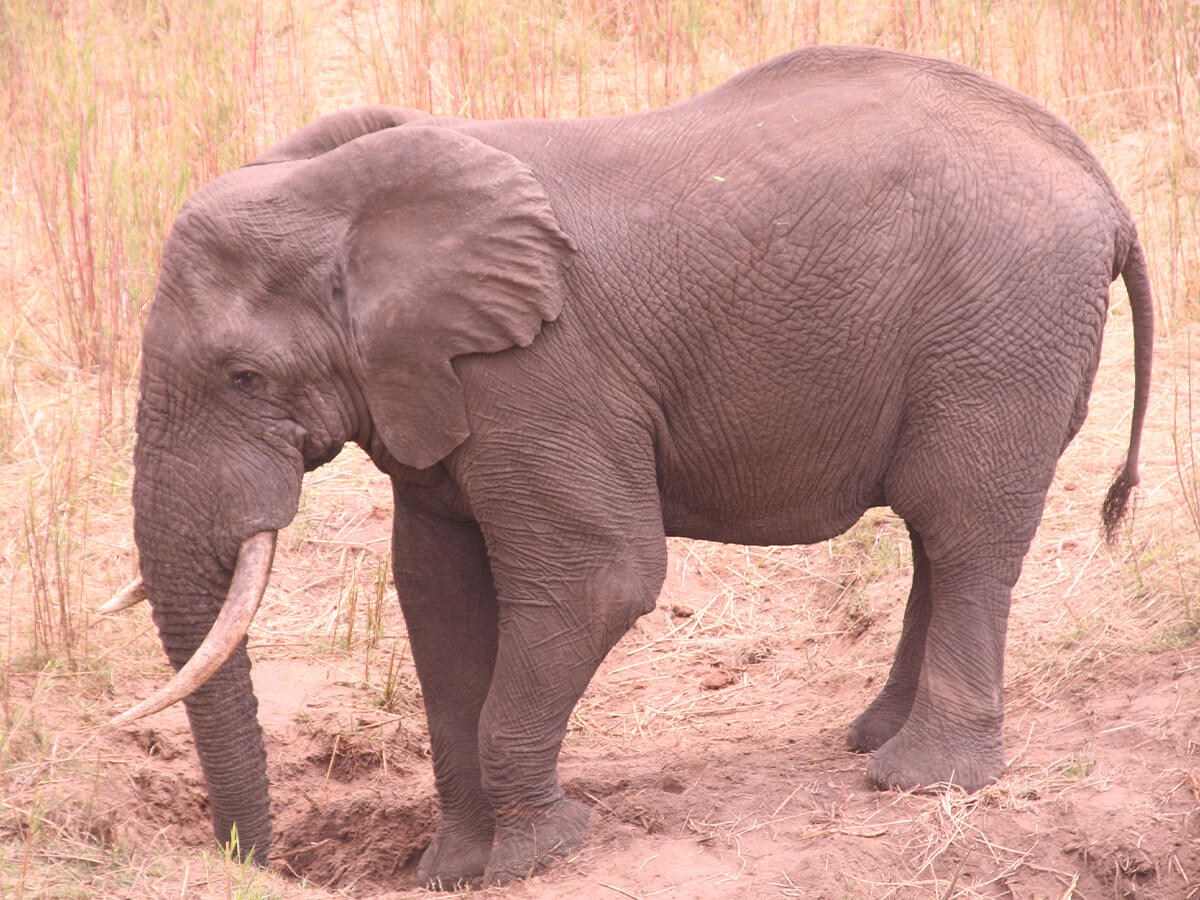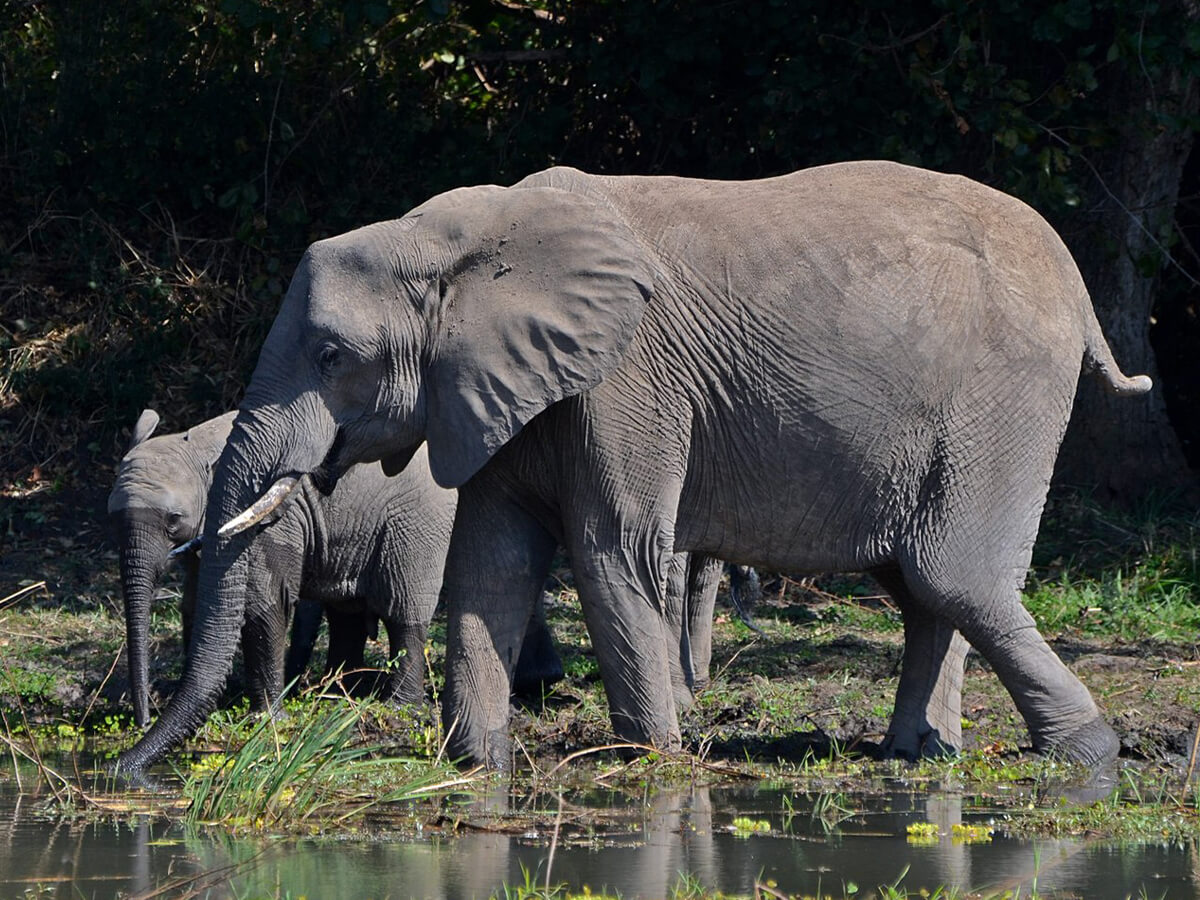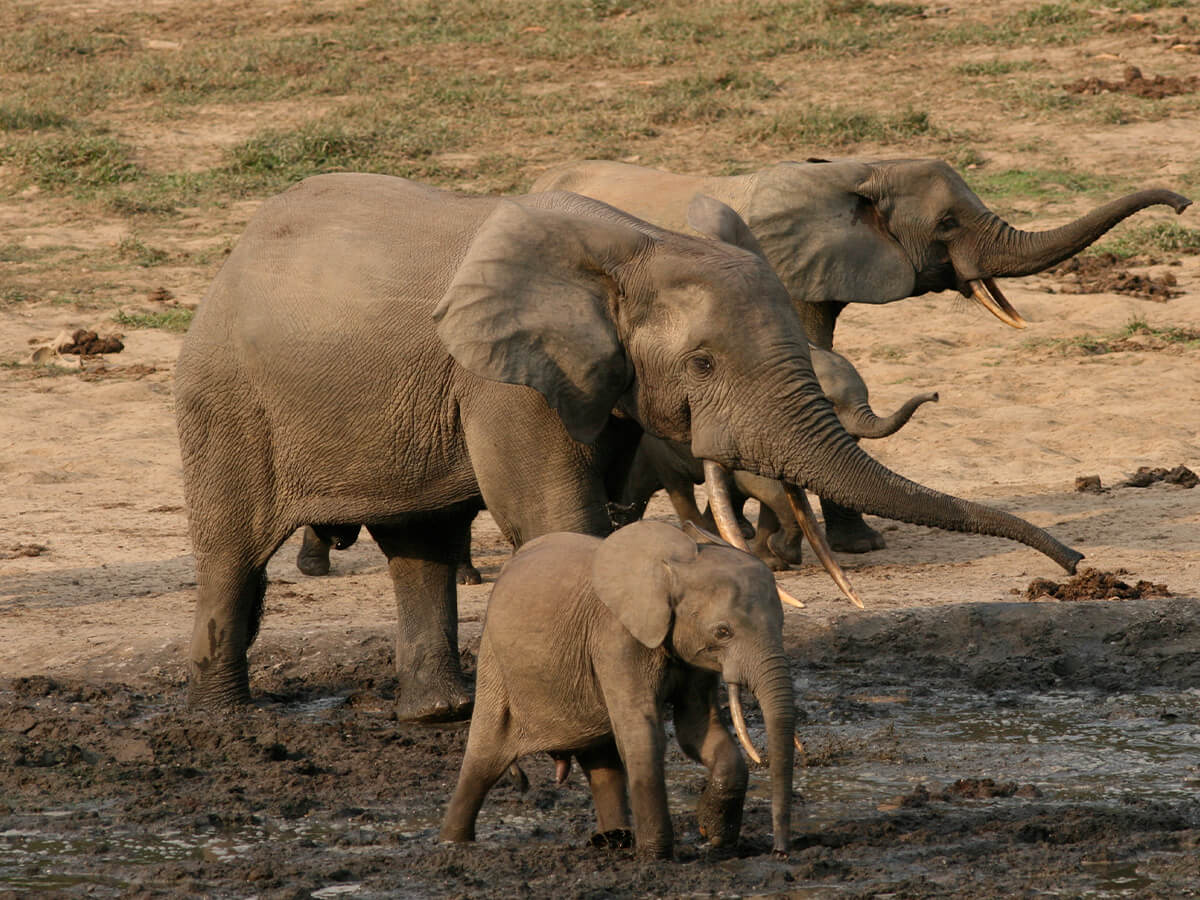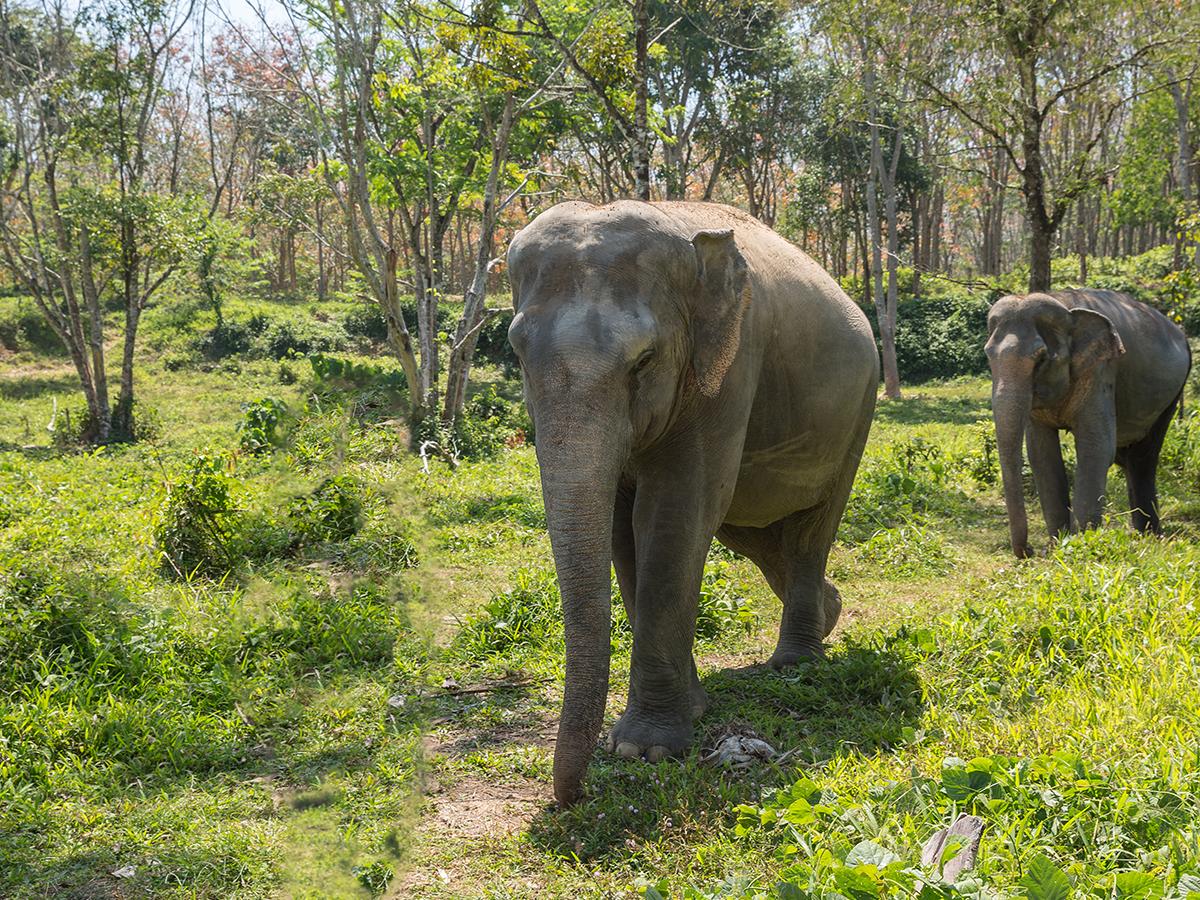Elephant Sanctuaries: Real vs Fake
Elephant sanctuaries are sold as a place of safety, rest, and comfort, where elephants will be protected from suffering and unjust treatment. Unfortunately, our fascination with elephants has led to exploitative animal businesses misrepresenting themselves as elephant sanctuaries or sanctuary-like facilities. These so-called sanctuaries end up exploiting the very animals they claim to protect.
Baby elephants are sometimes captured from the wild to live a life of captivity; others are bred using invasive artificial insemination. If you plan to visit to an elephant sanctuary, you should know how to spot the good from the bad. Read on to discover:
- What an ethical elephant sanctuary is
- How to tell an ethical sanctuary apart from a fake one
- A list of fake elephant sanctuaries to avoid
- A list of ethical elephant sanctuaries to visit
What is an Ethical Elephant Sanctuary?
An ethical elephant sanctuary is a place where elephants' needs and desires are put first, ahead of profits or human convenience. They have:
A ton of space
Ethical elephant sanctuaries have hundreds of acres for elephants to roam. This space doesn’t include the acreage or land where building structures or spaces are dedicated for humans and elephant care — these acres are for elephants only. An ethical sanctuary will be upfront with how many acres their elephants get to enjoy.
Elephant autonomy is respected
Ethical elephant sanctuaries give elephants the freedom of choice, something that no zoo, circus, or public display facility can provide. Elephants can choose between a field or forest to roam in; they can choose with whom to spend their time; they can choose whether to see humans or not. While these choices are still limited compared with life in the wild, they are far better than public display facilities.
 Soft surfaces, like dirt, help keep elephants' feet healthy. Concrete flooring at zoos contributes to foot problems which are a major cause of illness and death in captive elephants.
Soft surfaces, like dirt, help keep elephants' feet healthy. Concrete flooring at zoos contributes to foot problems which are a major cause of illness and death in captive elephants.
The public is protected from any unsafe elephant contact
Human caretakers abide by safe contact rules at all times at ethical elephant sanctuaries. The public is not allowed to ride, bathe, feed or interact with elephants in any way that jeopardizes their safety or the freedom of the elephants. Bull hooks or other tools of control are never used. Ethical sanctuaries use only positive reward-based methods so that medical or other procedures can be performed.
Facilities are not open to the public
Real sanctuaries do not open their facilities to the public in the way that zoos or circuses do. Most zoos — even the more prestigious — must always make elephants available to their paying customers. Elephants are not given privacy during the day because they cannot escape the constant onslaught of humans looking at them. Circuses, of course, are nightmares for elephants. At a real sanctuary, elephants are given such vast spaces to roam, so there can be no guarantee that people will be able to “get their money’s worth.” Instead, ethical elephant sanctuaries contribute towards education by providing live-streaming videos of their elephant habitat and educational outreach in communities that are not intrusive into elephants’ lives.
Some are accredited
The Global Federation of Animal Sanctuaries (GFAS) gives accreditation to those that meet their stringent requirements. But all true sanctuaries meet a list of important criteria.*
*See Criteria to meet sanctuary standards below
How to Spot a Fake Elephant Sanctuary
Fake elephant sanctuaries are operations that continue their commercialized activities while portraying themselves as places that put elephants' needs first. In reality, this is far from the truth. One of the first ways to spot a fake sanctuary is seeing any of the following words in the name or description of the facility:
- Ark
- Ranch
- Preserve
- Sanctuary (Many claim to be sanctuaries, check whether the elephants are allowed to interact unsafely with visitors)
Retirement. Some fake sanctuaries claim they are in the business of protecting elephants "retired" from circuses, when in fact, they are not protecting them at all. Instead, elephants are still forced to do the following things:
Breed. Giving birth to babies who are destined for a lifetime of exploitation in circuses.
Performances. Elephants are forced to perform for tourists, give rides, “paint” pictures, or other similar activities.
Live in a small area. Elephants are regularly confined in small areas for public display.
Baby elephants. Baby elelphants are sometimes captured from the wild to live a life of captivity; others are bred using invasive artificial insemination techniques.
If you are considering visiting an elephant sanctuary, you should be aware of how to spot the good from the bad.
Elephants at fake sanctuaries are held captive by humans for exploitation. When we are told elephants have been moved to a sanctuary, we expect that exploitation and threats to their well-being will stop. Unfortunately, when fake sanctuaries get their hands on elephants, they use them to create undeserved goodwill for the very exploitative entertainment industries that had exploited them in the first place.
The bottom line: if the behavior wouldn’t happen in the wild - for example, bathing with many different people, posing with trunks up for photos, giving rides to visitors - then you can assume the elephant is being exploited for profit.
 Sanctuaries provide elephants with a range of habitats to choose from, such as ponds, forests, and grasslands.
Sanctuaries provide elephants with a range of habitats to choose from, such as ponds, forests, and grasslands.
Fake Elephant Sanctuaries To Avoid
Fake elephant sanctuaries perpetuate exploitative abuses and continue harming elephants who have been abused and have suffered their entire captive lives. Below is a list of four fake elephant sanctuaries operating in the U.S.
1. The Endangered Ark Foundation
The Endangered Ark Foundation is a nonprofit organization "providing a retirement ranch for circus elephants." However, its board of directors consists of the lead officers of the Carson & Barnes Circus. With some fifteen elephants, Carson & Barnes seems to have chosen the Ark to care for elephants they can no longer use in the circus.
However, these elephants are still being used. This "ark" breeds elephants and sends them to zoos. Dickerson Zoo, which has a long history of doing business with the Ark, took elephant Hugo from the Ark in 2019 when he was eight years old, presumably for breeding purposes. Fort Worth Zoo and others have also obtained elephants from Carson & Barnes via the Ark Foundation's “nonprofit” breeding business.
As if this weren’t bad enough, the Ark also breeds elephants to send to none other than the for-profit Carson & Barnes Circus! Elephant Val, now 13, was born at the Ark in 2007 and sent to the circus, which means she was taken from her mother — a callously cruel separation since female elephants choose to stay with their mothers' herds for the duration of their lives in the wild. In another betrayal, an elephant named Colonel, who was born at the Ark in 1991, was sent to Fort Worth Zoo in 2013. The Ark gave notice another elephant birth is expected in late 2020.
These actions make it plain to see that the Ark is in the same business of exploiting and harming elephants. Carson & Barnes Circus and other circuses and exploiters made money off these elephants before sending them to the Ark.
2. The Preserve
Zoos have been part of the zoo-circus circuit for decades. The circus-like outfit Have Trunk Will Travel (HTWT) was forced out of California when that state passed a bullhook ban. HTWT then set up shop in Texas as The Preserve. That certainly sounds like a sanctuary, and many people believe this is the case. But The Preserve still rents out elephants for weddings and offers tourists selfies, elephant "paintings," and similar exploitations. While in California, The Preserve's owners were filmed abusing elephant Tai with electric stun guns and beating her with bullhooks.
Oregon Zoo enriched the owners of HTWT with $400,000 in 2013 to void a contract that gave HTWT “ownership” of a newborn calf, Lilly, and for the breeding loan of Tusko, an adult male. It is yet another example of zoos trafficking in elephants from circus-like businesses, this time one that is masquerading as a "preserve" while operating as both a for- and non-profit.
3. Two Tails Ranch
Two Tails Ranch (TTR) is a direct outgrowth of the sprawling, multi-generational Zerbini Family Circus and is headed up by a person who has been a circus elephant trainer all her life. Elephants used at TTR are cycled through their traveling circuses in North America. Again, posing as a place for "retired" elephants, we find tourists posing for selfies, giving baths to elephants, buying elephant "paintings," and taking rides on the backs of elephants. As fits the pattern, TTR is also a nonprofit organization with the ability to write-off its costs for elephant maintenance. At the same time, it is also listed as a for-profit corporation.
Marie and Schell, two aging elephants at TTR seasonally, are still used in the Zerbini Family Circus circuit. TTR bred elephants with resulting births in 1990 and 1991 and appears to be seeking to breed more.
4. Elephants of Africa Rescue Society
The Elephants of Africa Rescue Society (EARS) was recently folded into its parent business, the Monterey Zoo. However, the EARS site remains active and bears mentioning given the misrepresentation this organization perpetuated for years. EARS claims to provide a “sanctuary” for elephants and other African species. However, this organization hosted annual galas where people can come into direct contact with elephants. Protected contact wasn’t observed and still isn’t to this day for staff at EARS/Monterey Zoo. In 2018, an elephant attacked and severely injured an employee. Protected contact where there is always a barrier between people and elephants would have prevented the disaster.
Unsurprisingly, the Carson & Barnes Circus is a source of elephants for EARS/Monterey Zoo, sending elephants Christy and Paula there in 2007. Paula is believed to have died in 2018 at age 47, which is young for her species. Malaika, who was born in the wild, was first passed from Marine World Africa to Six Flags before arriving. She died at this “EARS” business too young too, at age 28. Malaika’s voice was used to represent the T-rex in the movie "Jurassic Park." They all continued to be used to entertain tourists after arriving. Once claiming to be a sanctuary, they are now truly a zoo, treating their elephants no differently.
*Criteria for Real Elephant Sanctuaries
There are three elephant sanctuaries in North America. Two are GFAS-accredited, and one is not, however all three meet the following criteria.*:
- They exist first and foremost for the elephants. The needs of elephants are put first, before the needs or desires of humans.
- Elephants are not put on public display.
- Elephants are not made to entertain humans. No rides, “painting” or tricks.
- Elephants are never, ever bred. Real sanctuaries absolutely do not breed elephants. This prevents calves from being born into lifetimes of captivity. Even though sanctuaries are far better than other forms of captivity, they are still captive facilities, but with a world of differences.
- They are true nonprofit organizations. Their nonprofit structures are not designed to cover or provide financial benefits to for-profit businesses.
- They offer hundreds of acres for elephants to roam in social groups (or solitary if that is what the elephant chooses).
- Real sanctuaries consist of a range of land features, including forests, meadows, and lakes, where elephants can walk miles as they choose.
Real Elephant Sanctuaries
1. Performing Animal Welfare Society
The Performing Animal Welfare Society (PAWS) has a long track record of running successful sanctuaries for retired performing animals such as tigers, bears, and big cats, in addition to elephants. The PAWS ARK 2000 facility, located in San Andreas, California, features:
- 2,300 acres
- Currently home to 4 African and 3 Asian elephants
- Animals who are never bred, traded, sold, rented, or forced to perform in any way
- 30 trained professionals who care for animals 24/7
PAWS also takes legislative and other intervention actions to help eliminate the wildlife captivity industry by prohibiting breeding, banning circus performances, and more.
2. The Elephant Sanctuary
The Elephant Sanctuary (TES) in Hohenwald, Tennessee, has provided a safe haven for previously used and abused elephants for over 25 years. It is the nation's largest natural habitat refuge for retired elephants. TES features:
- 2,700 acres
- Provided sanctuary to 27 elephants over the years
- Currently home to 9 elephants retired from zoos and circuses
- Accredited by the Association of Zoos and Aquariums
TES provides elephants with diverse, spacious habitats, individualized care, and, most importantly, the freedom of choice. Most elephants at TES were captured from the wild at very young ages, often before they reached three years old. The sanctuary works with elephants to help them undo decades of trauma and negative learned behaviors. You can watch them here.
 Sanctuaries allow for more natural social groupings. Ethical sanctuaries never separate elephants to send to zoos.
Sanctuaries allow for more natural social groupings. Ethical sanctuaries never separate elephants to send to zoos.
3. Elephant Refuge North America
The Elephant Refuge North America (ERNA) in Attapulgus, Georgia is home to three elephants, Bo, a former circus elephant, Tarra, who started out as a circus elephant but has lived in sanctuary for many years, and was recently transported from the Elephant Sanctuary in Tennessee to rejoin her long-time human companion, Carol Buckley, the founder of ERNA and Mundi, who was isolated and chained for 35 years in a Puerto Rican zoo and is now enjoying her new found freedom at ERNA. This new sanctuary is already making a big difference in the lives of these three elephants who are forming a deep bond, along with their dog friends, Mala and Sammy. This sanctuary is posed for the inclusion of up to 8 more elephants in its lush and spacious setting.
- 850 acres for elephants to roam
- Densely forested areas, rolling hills, lush pastures, dense forests, spring-fed lakes, creeks, and streams
- A climate that allows elephants to remain outside 24/7 almost all year
- Experienced elephant care professional and sanctuary founder Carole Buckley has published her findings on the rehabilitation of captive-held elephants, emphasizing the importance ERNA places on tailoring individualized care to each elephant that accounts for past traumas, helping build up confidence and autonomy.
- Elephant areas are equipped with live-streaming cameras for the public to observe and learn from the elephants at ERNA without interfering in the elephants’ lives.
Conclusion
As calls for zoo exhibits and circuses to close grow louder every day, the number of ethical elephant sanctuaries is expanding worldwide.
However, there is still a lot of work to be done. Across the world, cruel establishments brand themselves as elephant sanctuaries, preying on visitors’ good intentions, solely to make a profit. We need caring and compassionate people to help us reveal the truth about these businesses, and make it possible for elephants to live out the rest of their days on earth in a true paradise-like setting where their welfare is the top priority.
What you can do:
- Visit our Elephant Action Center, to sign urgent alerts against elephant cruelty
- Learn more about elephant captivity in zoos and circuses
- Read our annual report on the country’s 10 Worst Zoos for Elephants
- Donate to In Defense of Animals to help us continue our life-saving work


